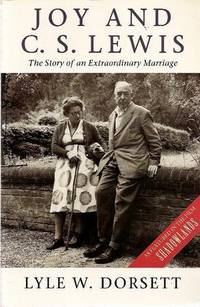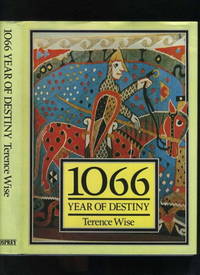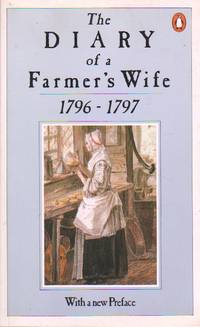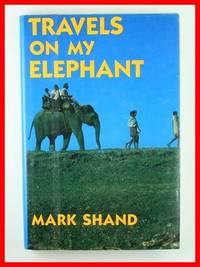EarlEDoors rated this book 4 of 5 Stars.
This book is the reprint of 1974 with an introduction by Roy Hudd the comedian and Music Hall historian. It is a summary of pantomime as we know it now and the main changes which have made it thus since its introduction into this country.I started reading this book to answer two questions. I wanted to know the origins of pantomime and I wanted to find out why the principal boy is always a girl and the dame, or ugly sister, is always a man. The meaning of the word pantomime is ‘imitator of things’which, to a theatre person is a ‘dumb show with music’. Well, the dumb show with music can be traced back to ancient times. It disappeared in Christian Rome to reappear in 15th century Italy together with its relative Punch and Judy. The form spread to England in Restoration times and quickly became popular.It changed over the years. Up to about 1880 it would usually be the second half of a theatre bill and have a short opening, a transformation scene and a longer Harlequinade. The Harlequinade was a slapstick routine performed by the clown, a stooge called panteloon and a police constable. I get the feeling that it would be familiar to anyone who has watched the Keystone Cops. As time moved on, the opening was gradually extended and professional music hall comedians were introduced. The Harlequinade slowly became just one short scene and finally disappeared.There is a good study of pantomime subjects. The story of Puss in Boots appears in many cultures, as does Cinderella. Red Riding Hood can be traced back to Roman times. Grimm got hold of the story and re-wrote it as his own. The pantomime is not therefore based on Grimm’s fairy story but runs parallel to it.It has to be said that the book looks only at the main London Pantomime Theatres and that it looks mostly at Drury Lane. The author admits that a more thorough study would have to look at many of the provincial theatres.And my second question? The very first female principal boy was Miss Ellington in ‘The Good Woman in the Woods’ in 1852 but neither Roy Hudd nor the author explains why. Women were often found in the role of Principal Boy during the First World War probably because male actors were in short supply. Apart from these two comments the book is silent about my query.
EarlEDoors rated this book 4 of 5 Stars.
This book is a compilation of two stories about the Parsons family of Paradise Court in the east End of London and, more particularly about ‘Duke’ Parsons, landlord of the ‘Duke of Wellington’.‘Paradise Court’ begins in 1913 and is a saga of everyday life against the backdrop of the Great War. ’After Hours’ starts in 1923 and is a story based around ‘Duke’ losing his license whilst his daughter Sadie now a beautiful young woman draws the family into heartache and tragedy.A superb family drama.
This beautiful 126-page book covers all aspects of aromatherapy with a wealth of information. In sixteen fully illustrated chapters it starts by explaining what aromatherapy is. Then, with an at-a-glance chart it explains how essential oils are made listing their properties and uses,The book then mentions the mood enhancing and healing properties of essential oils before listing the recipes for a number of beauty treatments, moisturisers baths and inhalants.It is indeed the complete guide to choosing, massaging and relaxing with essential oils.
EarlEDoors rated this book 4 of 5 Stars.
As retold by the film ‘Shadowlands’ this biography, based on letters and family papers tells the story of Joy Davidman.Born a Jew but converting to atheism, then communism Joy read the works of C S Lewis. As a result of this reading she became a Christian and wrote the letter, which was to change her life and bring brief happiness to Lewis.Lyle W Dorsett is curator of the Marion E Wade centre, which houses the papers of C S Lewis. The centre is at Wheaton College Illinois.
EarlEDoors rated this book 5 of 5 Stars.
Perera was born in Madras but lives and teaches in America. This is the first British publication of these twelve stories but some have appeared earlier in the USA.A stubborn old woman vows to stay silent one day a week until her death becomes her loudest and most powerful silence. Two dubious holy men awaken a child to the irony of belief. An unjustly dismissed schoolmaster becomes a rueful metaphor for the uselessness of hindsight.These stories based in Indian culture can be humorous wistful and tragic and, like the stories of Salman Rushdie, draw us into the world of the storyteller. Padma Perera is a dazzling talent.
EarlEDoors rated this book 5 of 5 Stars.
Of the American bands of the 60s The Doors were one of the most important and enduring. Their influence is heard in much post punk music and thirty years after the death of singer Jim Morrison (1943-1971) their music continues to sell, averaging a million albums a year.Like many bands of their era The Doors were outrageous to be noticed, their embrace of the counter culture their troubles with the law and their personal scandals are now part of pop history.This comprehensive illustrated history – updated in 1988 – assembles interviews; newspaper reports record and concert reviews, trial transcripts, FBI reports and magazine articles. There are hundreds of photographs in colour and black and white giving a record of their amazing career, from the UCLA to Paris in 1971 and Morrison’s strange death.
EarlEDoors rated this book 5 of 5 Stars.
Alan Ross (1922-2001) was educated at Haileybury and Oxford and played cricket for Oxford and the Royal Navy in which he served during the Second World War. He was cricket correspondent for the Observer (1953-72) and for the Times. He has written a number of books on cricket and a number of volumes of poetry.The Penguin Cricketer’s Companion is a superb anthology of poetry and prose written by some of our greatest writers including Charles Dickens. There are other items about our greatest cricketers such as Box on Grace- and Cardus on Bradman with sections on Poetry and New Poetry. The largest section however is called ‘The Poetry of Cricket’. This is perhaps no surprise bearing in mind Alan Ross’s twin passions of poetry and cricket. This book is truly the best that English cricket writing can offer.First published in 1960 this is the Penguin edition of 1981 reprinted 1984; 575 pages of excellent writing with an author’s index.
EarlEDoors rated this book 5 of 5 Stars.
The Vogue Body and Beauty book gives the facts – and possibilities – honestly without feeding dreams and illusions. It is full of facts and practical advice about the subjects important to women; exercise, slimming, skin care, sexuality, and nutrition. It also looks at perfume, hairdressing ageing and plastic surgery. Its concepts and ideas are within the grasp of every woman who has the knowledge and discipline to follow its ideas.The book is beautifully illustrated in colour and black and white and draws on Vogue’s resources for materials. There are in addition specially commissioned diagrams and drawings.
EarlEDoors rated this book 3 of 5 Stars.
The Norman Conquest of England, although taking place on one of the best-remembered dates in the historical calendar was an often-misunderstood event.It was one of the turning points of history, having a major impact on the shaping of British life.The three major contenders in the power struggle taking place Norman, Saxon and Viking are analysed here in detail. The result is a complete picture of a crucial year in world history. Military and social organisations weapons aims and tactics are all examined and the battles are fully covered.The conclusion reached by Terence Wise, eminent military historian, is that the events of 1066 were the conclusion of a drawn out power struggle between Normandy and Scandinavia for the prize of England.
EarlEDoors rated this book 3 of 5 Stars.
The book ‘Naval Warfare’ published in 2004 by Silverdale books is adapted from a larger Time-Warner book called ‘Naval Warfare – an Illustrated History. In 219 pages of tightly packed words and hundreds of photographs and drawings it takes us from the battle of Salamis (Athenians versus Persians) to the Falklands conflict.The book is edited by Richard Humble a man with many historical naval books to his name. I was unable to find the foreword by Peter Kemp a former head of the Royal Naval Historical Branch (As mentioned on the title page) but there is a very comprehensive index.Definitely a book for the naval historian or the war gamers.
EarlEDoors rated this book 4 of 5 Stars.
Well-known gardener Geoffrey Smith (1928-2009) was famously interested in plants and their origins.As a former superintendent of the Northern Horticultural Society’s gardens at Harlow Carr near Harrogate he gained valuable experience of growing plants in difficult conditions; the site was well known for its harsh climate, strong winds and soil problems. Similar conditions existed in his own garden nearby where he only grew plants which would stand up to harsh problems.These are the plants he describes in his book. He starts with the general considerations of designing a garden telling the reader about the problems of frost, wind and soils and gives his ideas for dealing with them. He studies planting techniques and dealing with shade. The plants he lists have all been carefully selected for their enduring qualities as well as for the beauty of their flowers, foliage or fruit.Above all each plant he discusses has proved its worth to him in difficult situations over many years.
The Ladybird examines the compelling inner power of a war-wounded German aristocrat convalescing in the company of a conventional English officer and his attractive wife.In The Fox a young man intrudes on the solitude of two women in a struggling farmstead, setting off a chain of events, which end in tragedy.The Captains Doll shows Lawrence’s lighter side in a tale of infidelity and indecision in occupied Germany.Three classic short stories from a master of the genre
A play in three acts by Robert Anderson, which opened in London in 1957In a New England boys’ boarding school the only intimacy encouraged between the pupils and the masters’ wives is ‘tea and sympathy’. Laura though has more than sympathy for young Tom; he reminds her of her first husband-a sensitive boy who died in the Second World War proving his courage and manhood. Tom is persecuted for being different and is labelled a homosexual. In fact he is quite normal and is secretly crazy about Laura whose marriage to second husband Bill is distinctly rocky.Rejected by father friends and teachers tom tries to prove himself with the local whore but is impotent and tries to kill himself. For this act he must leave the school but on his last day Laura declares that she is leaving Bill whose persecution of Tom has made her see what Bill is covering up. She goes to Tom and finds him doubting himself so much that she offers herself – and he responds.
EarlEDoors rated this book 2 of 5 Stars.
Michael and his homosexual cronies throw a birthday party for Harold, a clever young Jew with a liking for pills and pot. Other guests are Donald who, like Michael is undergoing psychoanalysis and is the nearest thing Michael has to a real friend; Emory who is the only one who is obviously a raging queen; Hank who has left his wife and children to live with Larry and Bernard, a tall Negro.As his present for Harold, Emory has rented a gorgeous blond hustler, Cowboy.While waiting for Harold and his live present to arrive the boys enjoy their usual brittle jokes and bitchiness, referring to everyone as ‘she’, using girlish names and referring to favoured stars such as Rita Hayworth and Judy Garland. It soon becomes clear that they are seriously disturbed with Bernard perhaps the most balanced and Michael the nastiest by far. Like the others he is troubled about growing old and losing his looks and hair. He has travelled the world and is now seriously in debt. A heavy drinker, he has been on the wagon for five weeks but events soon make him reach for the bottle. Booze only makes him more hostile, sarcastic and abusive. He takes particular offence against dumb but harmless Cowboy.Eventually Michael turns his malice on Alan with whom he roomed at college whilst still hiding his homosexuality. Alan has turned up unexpectedly at this party unaware that he is amongst homosexuals apart from Emory whom he assaults for being a freak.To make Alan confess that he is one of them, Michael tries to organise a game of phoning the person one most loves. He fails miserably and the party breaks up in disarray.
EarlEDoors rated this book 3 of 5 Stars.
First staged in 1960 this is the third part of the Wesker Trilogy about a family of left-wing Jewish intellectuals (Chicken Soup with Barley, Roots) and is set in 1946 Norfolk. Dave and Ada Simmonds move into a house in the middle of a Norfolk field where there is no gas electricity or running water. Assisted by Ada's brother Ronny and her mother Sarah, the couple find that they are constantly having to explain their disillusionment with city life. When Dave's old army pal Libby Dobson visits they find him alienated and cynical and later that same evening Dave is sacked from his farming job for 'inadvertently' stealing some linoleum. However he proceeds with his plan to produce quality hand made furniture and sets up a workshop with some success. They raise a family but by 1959 economic necessity forces them to move back to London where they find that Ronnie feels more of a sense of failure than they do.
EarlEDoors rated this book 5 of 5 Stars.
Ann Hughes, the wife of a farmer, lived near Chepstow Monmouthshire. For one year in her life – 1796/7 she kept a diary of the events great and small going on around her.Her main concerns are about the harvest, the lambing, cidermaking and the many feasts and celebrations, which a village population enjoy as the seasons pass and for these, she gives her recipes.Yet we also hear about death and scandal, particularly about the maid Anne’s love affair with the young parson and the stories about bad tempered John, Anne’s husband.This is a fascinating story, which has survived because Anne’s great granddaughter passed gave the diary to Jean Preston. The diary was first published in instalments in the Farmer’s weekly in 1937.
EarlEDoors rated this book 5 of 5 Stars.
Mark Shand, British travel writer and conservationist was restless. He was so restless that he decided to ride across India on an elephant. He started by looking at the feasibility of his idea and carried out a good deal of research. There is a bibliography in this book of some thirty titles. If he read them all or even simply consulted them he must now be a world authority on the Asian elephant. Mr Shand then travelled to India, spoke with a number of people he knew, bought an elephant and hired an entourage of experts to assist in his task.It was decided that the trek would be from Konarak to Sonepur, across Orissa and Bihar.Mr Shand describes the journey expertly, with style and with a tongue in cheek sense of humour. He talks about his growing relationships with his helpers and, more particularly with his elephant Tara. He breaks of where necessary to describe the scenery and ancient buildings and at one point to recount an eerie story about Tara’s refusal to cross an ancient battlefield.His arrival at Sonepur is timed to coincide with the Mela because the Mela in part is an enormous elephant market and he knows he will be able, regrettably but necessarily, to dispose of Tara.‘Travels on my Elephant’ was published in 1991.Eric Newby has also written about the Sonepur Mela in ‘The Land of the Elephants’ (a chapter in ‘Departures and Arrivals’ published in 1999). Both reports are vivid and very readable. Perhaps Mr Newby just has the edge in reportage, as he was not in love with his elephant.
EarlEDoors rated this book 4 of 5 Stars.
In Orphan of Angel Street Mercy Hanley is abandoned at birth in the Birmingham of 1900. Her harsh foster mother soon finds out however that she has a mind of her own which threats beatings and poverty will not change as Mercy tries to create o better life for herself and her foster mother’s crippled daughter.Through the years of the First World War Mercy continues her fight. When she has freedom and security she can give her love…..In The Narrow Boat Girl young Maryann Nelson is devastated at the loss of her father, but worse is to come when her mother re-marries. Norman Griffin is not the man he appears to be. Unable to find support from their unsympathetic mother Maryann and sister Sal have to live with their harrowing secret and for Sal it proves to be too much.Maryann runs away to a new life on Joel Bartholomew’s long boat and finds herself falling in love with life on the canals around Birmingham. The novel is a testament to the power of true love and its ability to overcome suffering.
EarlEDoors rated this book 5 of 5 Stars.
Bernard Levin (1928-2004) was a journalist famous for his wit and lack of reverence. To most people, he will need no introduction. Sometime in the early 1980s (the book was fist published in 1985) he walked part of the route covered by his 'hero' Hannibal on his famous attack on Rome with his 60,000 troops and 37 elephants.I expected the book to cover more of Hannibal's trek than it did - it starts at the French/Spanish border and ends at the French/Italian. This however was no drawback: Mr Levin writes with great clarity and good humour and his asides, which cover many subjects, are both humorous and erudite.A gentle study of one man's passion.210 pages with index and 8 pages of photographs. Highly recommended as a relaxing read.
EarlEDoors rated this book 5 of 5 Stars.
The 'interim' autobiography of Professor Jimmy Edwards.Reading this book you can meet the real person,whether nursing his trombone on stage,addressing a learned audience or cracking jokes on the radio.Shot down over Arnhem and earning the DFC Jimmy is frank enough to admit that 'Take it from Here' did not really flourish until the death of Tommy Handley in 1949 and the subsequent demise of ITMA. First edition 1953 published by Werner Laurie.
EarlEDoors rated this book 3 of 5 Stars.
I first came across the name of Aleister Crowley when I acquired a copy of Maugham’s 1907 novel ‘The Magician’. The character Oliver Haddo is said to be based on Crowley. It made me want to read more.Symons’ book is a scholarly work if it is sometimes written in the style of a boys own adventure story. It traces, quoting its sources, a life which began in London in 1860 and ended in Venice in 1913.In between these dates the subject lived the live of a chancer;of a ‘ducker-and-diver’ and died in poverty. There is very little mention of his writings other than his novel Hadrian 1V,although he wrote copiously on the black arts (The Goetia,The Book of the Law etc) and no mention of his infamous stay in Sicily mentioned by Cammell (Aleister Crowley the Black Magician 1969).However, reading ‘The Search for Corvo’ with no other knowledge about Crowley you feel that you have read a well-written thoroughly researched study of a very unusual man.(To confuse the picture further see also ‘The Magical Dilemma of Victor Neuberg’ Fuller 1990)














